One of the reasons that the crossguards of medieval and early Renaissance swords were spartan in design compared to later Renaissance and Baroque period swords was due to the gauntlet. What need is there to complicate the design of the sword when a sturdy pair of mail or plate gauntlets will deflect and deny damage from most glancing strikes from an opponents blade?
There is also an offensive advantage to wearing gauntlets during combat, as the substantial hand protection allows the warrior to grip the mid-section of his own blade to choke up on the grip. This half-swording technique allows the fighter to shorten the range of his weapon for very close-quarters brawling; it also turns the sword into a strong thrusting pick-like weapon that can be accurately driven into the weaker joints of armor. Obviously, this sort of technique is made more possible when a warrior has his hand protected with good gauntlets, or at least thick leather gloves.
Gauntlets were one of the more complex parts of armor to design, as they needed to be protective, but also fully articulated and not a hindrance to the movement of the fighters hands. Many incorporated some raised knuckles, giving even an unarmed warrior a tooth-crunching punch.
These mitten-style gauntlets protect the exterior of the hand, leaving the interior free for weapon control. They also have raised knuckles for unarmed fighting. They can be paired with a thick leather glove. The gauntlets are crafted from approximately 18 gauge riveted steel and are articulated. The thumb plate is affixed with a hinge of brass. The gauntlet is held to the hand with integrated leather strips and an adjustable leather strip with a brass buckle.


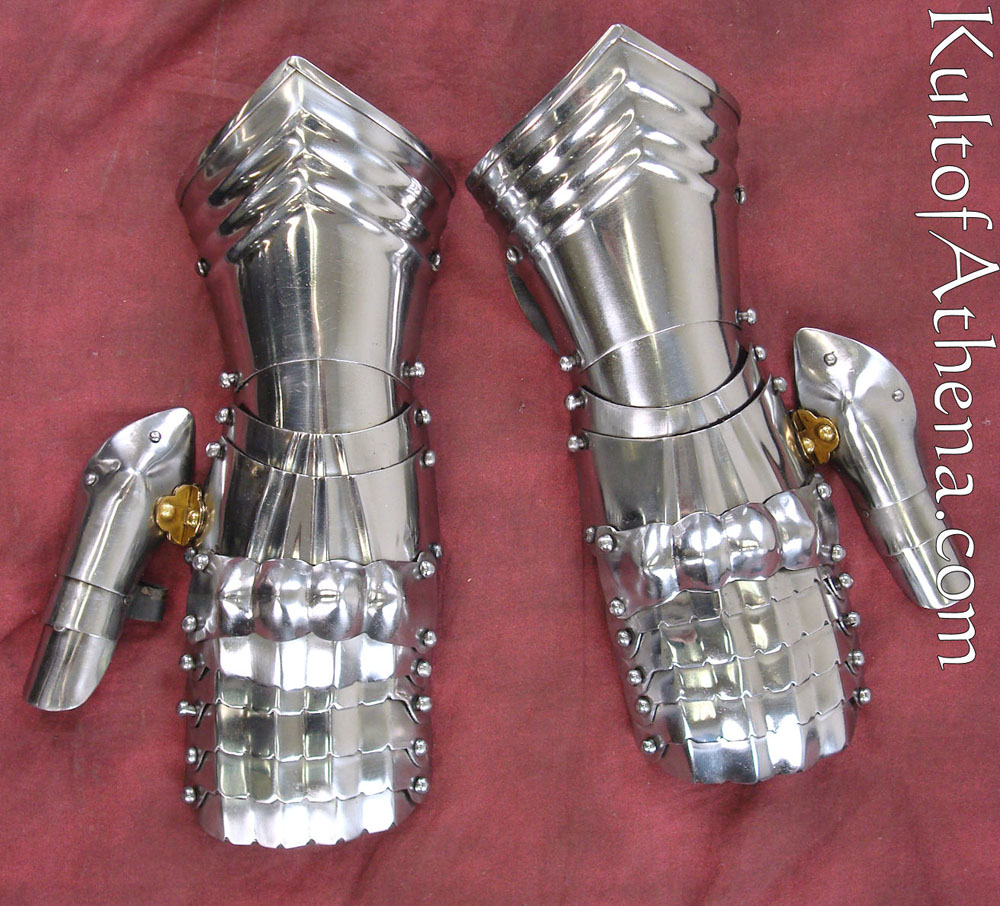
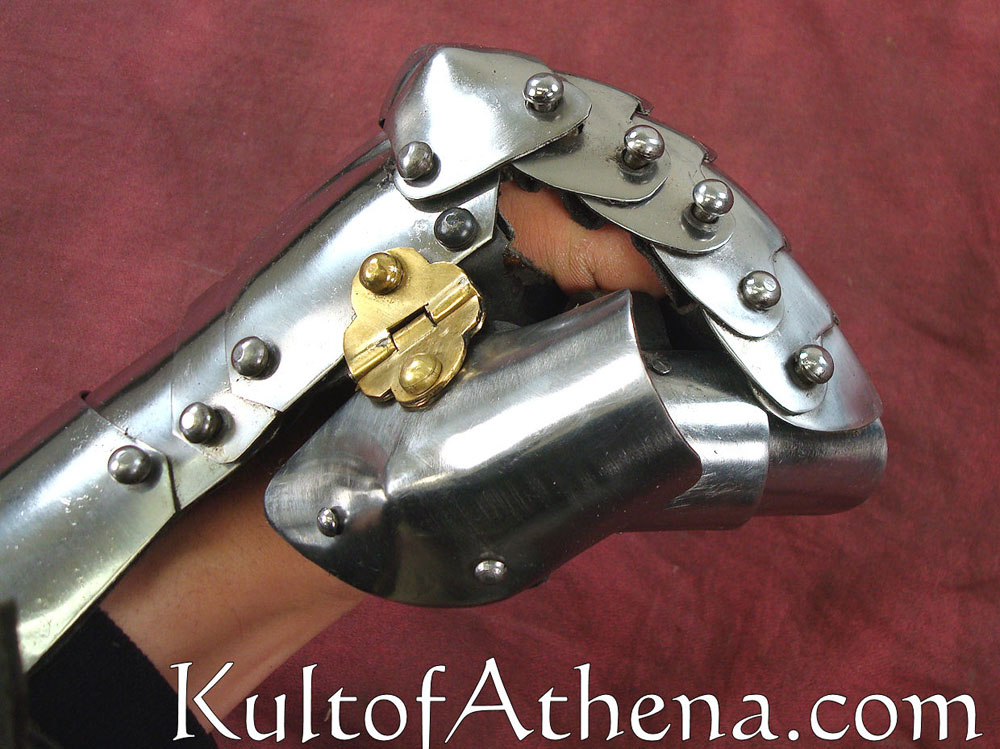

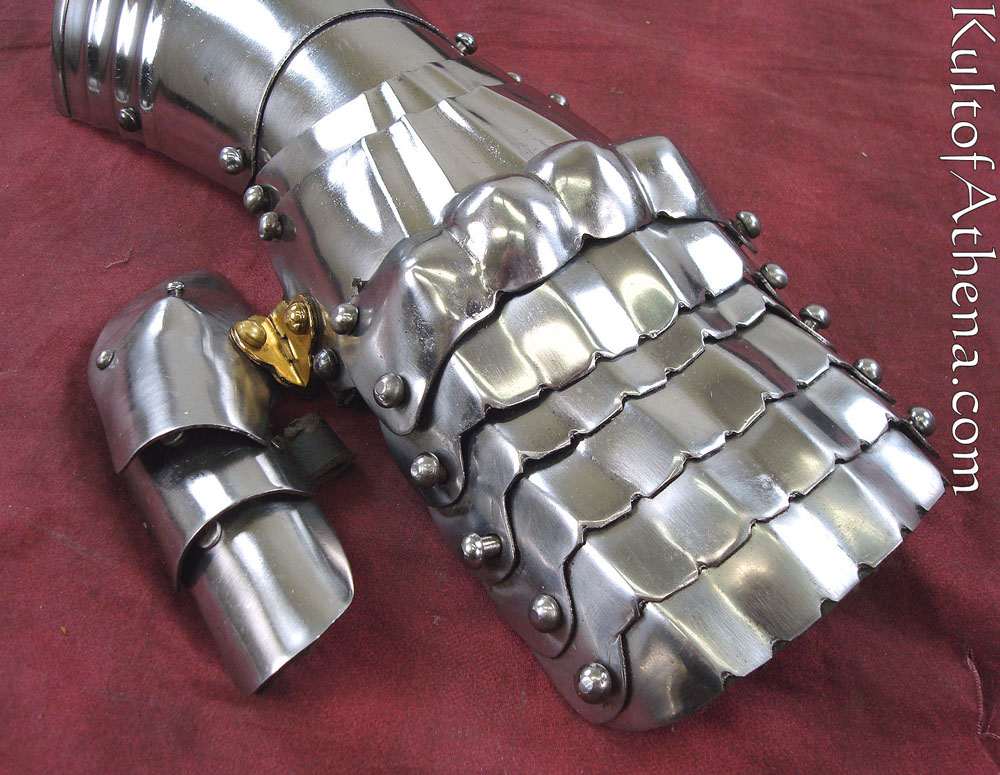
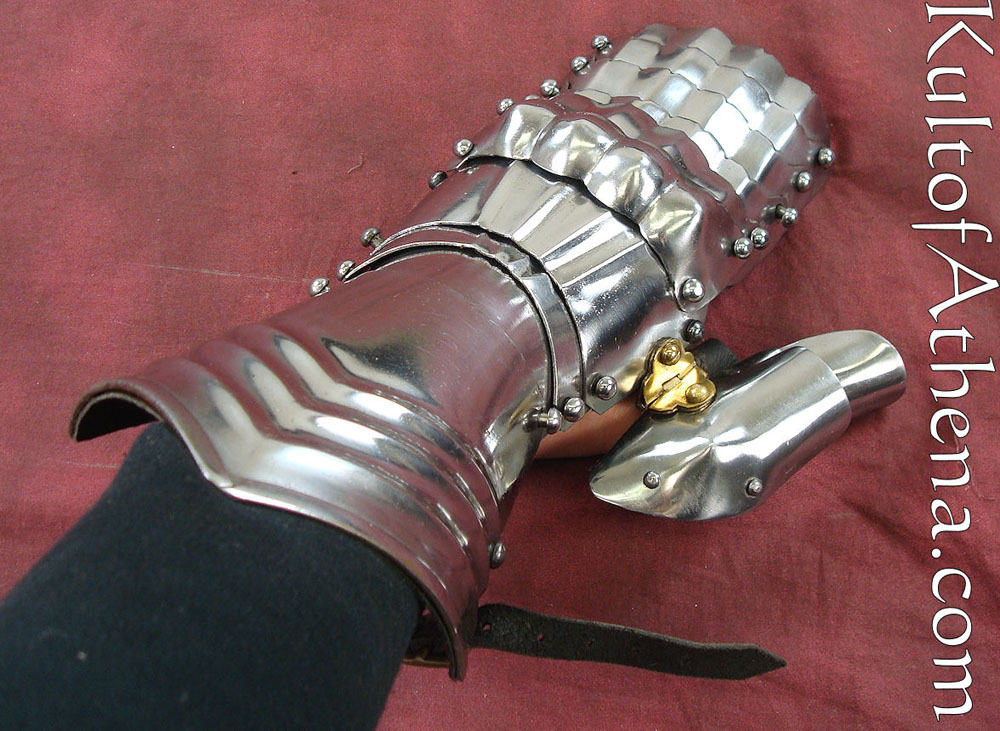
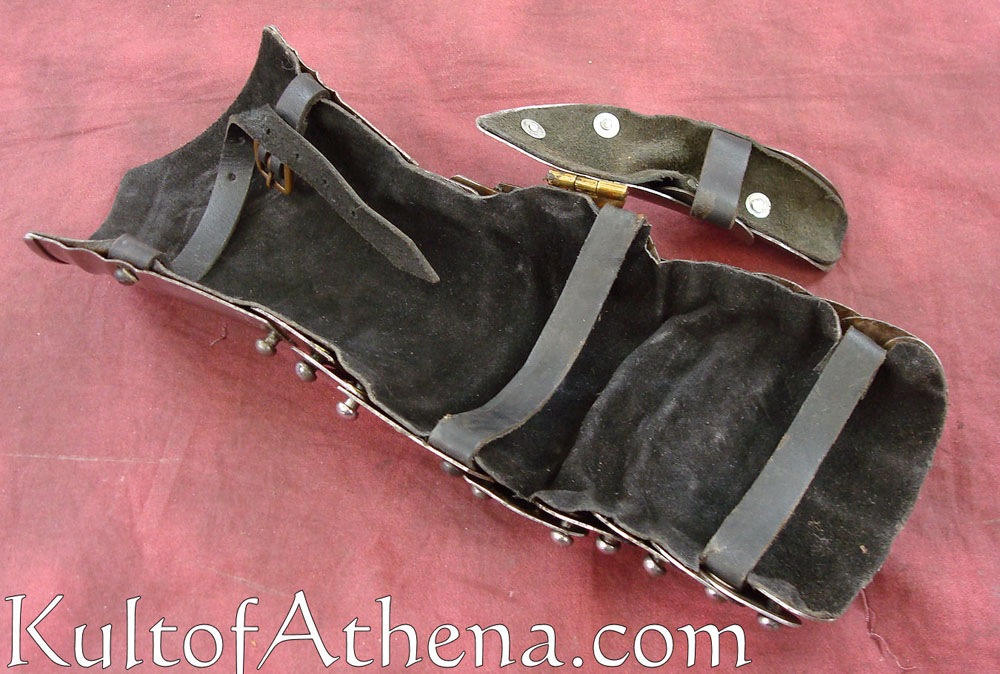

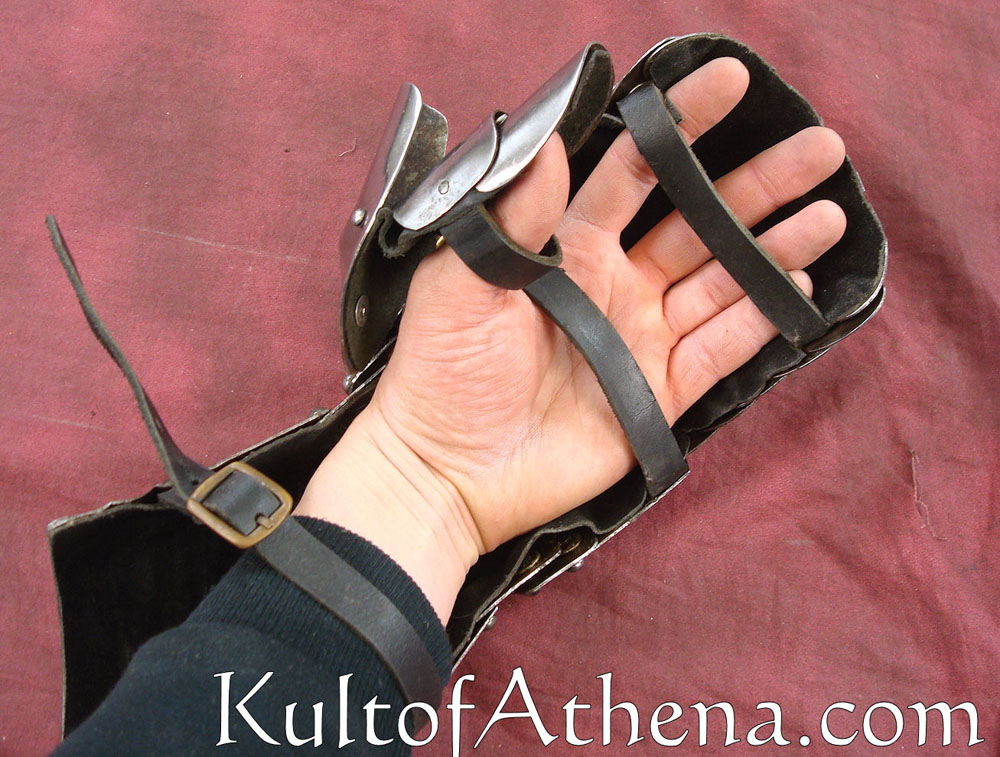
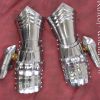


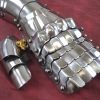

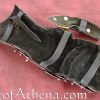
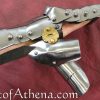
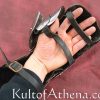

Reviews
There are no reviews yet.